History and Legend in the Landscapes of Georgia
Georgia, part of the Soviet empire, but its history is far more central to the birth of Christianity than a few decades of Soviet rule. This small group tour of the Caucasus explores Armenia and Azerbaijan as well as Georgia to set the historical framework for this region. The tour is suited for mature and senior travellers travelling as a couple or as a solo traveller.
30 Oct 19 · 11 mins read

History and legend in the landscapes of Georgia
It’s easy to see why Georgia was considered the most beautiful country in the Soviet Union. Though only about the size of Ireland, it offers an extreme diversity of geographic landscapes: green valleys filled with vineyards, desert-like rocky outcrops, high mountains dotted with ancient churches, and beach resorts along the Black Sea.
Yet, Georgia’s history and culture are as fascinating as its natural landscapes. Long at the crossroads of Europe and Asia, it has incorporated Turkish, Persian and Russian influence, while remaining completely distinct. Georgia was one of the world’s first Christian countries, and the people remain fiercely religious today. The landscapes are dotted with ancient churches and monasteries, wineries that have been operating for hundreds of years, and villages barely touched by the outside world.
What sets Georgia’s ancient remnants apart is that they are not just museum pieces, lying lifeless and inert. Here, history shades into myth. The stories that Georgians tell themselves about the past inform the current day while the legacies of ancient civilisations are still palpable here.
In this article, we draw from Peter Nasmyth’s Georgia: In the Mountains of Poetry in order to introduce you to some of the most interesting cultural and historical regions of rural Georgia. This article is part of our series of articles on Georgia, designed as backgrounders before you go on a tour of the Caucasus with us, or to simply help you as you firm up your travel plans. All of those articles can be found here.
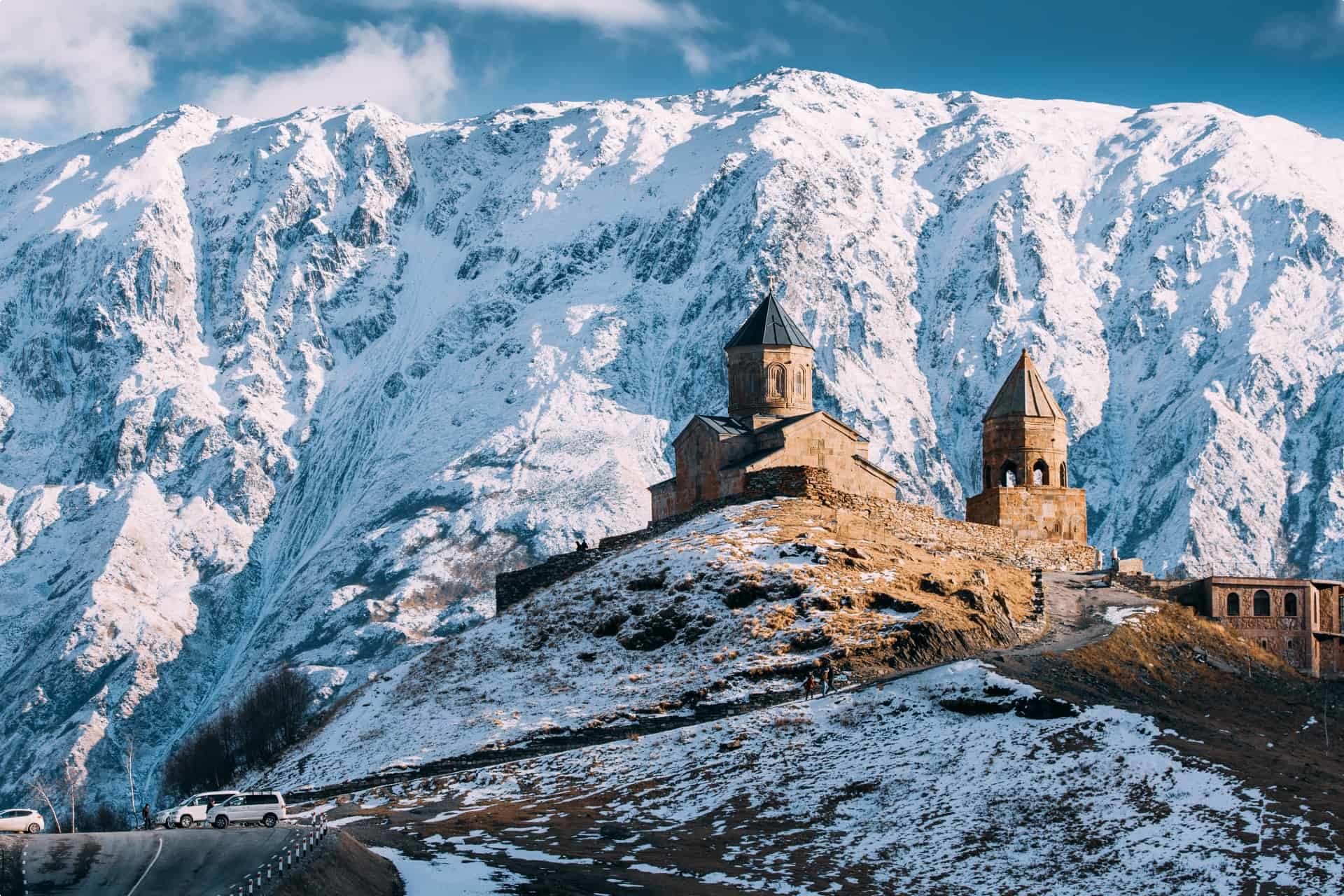
Mtskheta
The ancient town of Mtskheta, located within easy distance from Tbilisi, is the religious and historical heart of Georgia. Spirituality is palpable in this ancient place. In Peter Nasmyth’s vivid description of his visit to Mtskheta, he recalls that:
The myths, memories, and rich religious presences of Georgia dripped off every cornice and cliffside in this valley (Nasmyth, Georgia: In The Mountains of History, 111).
Located in a valley at the confluence of Georgia’s two main rivers, the Mtkvari and Aragvi, Mtskheta has long been central to Georgia’s mythos. The mountain overlooking the town, Mt Kartli, is believed to hold the spirit of King Kartlos, the father of the Georgian people and claimed descendant of Noah’s son Japheth.
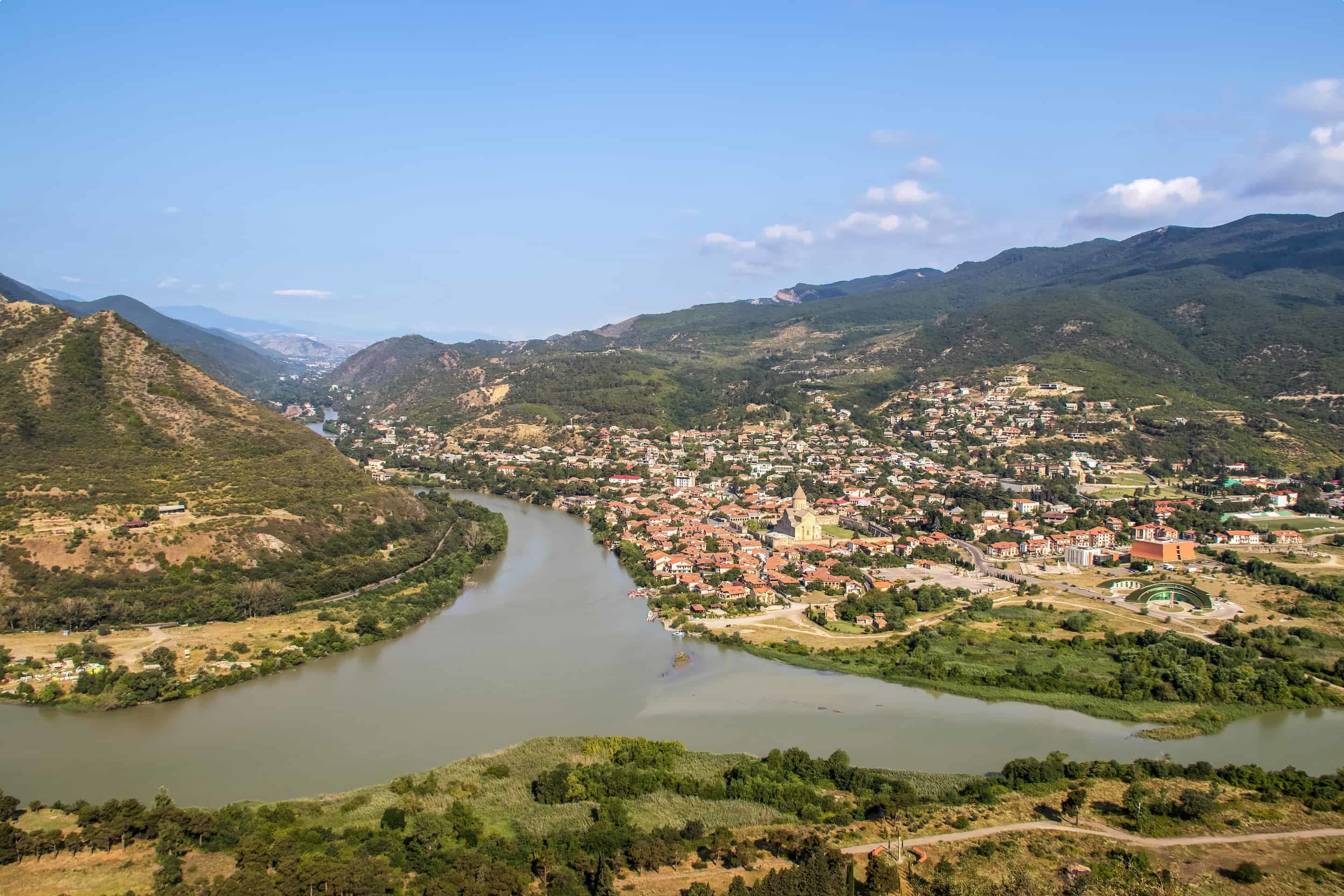
Prior to the arrival of Christianity in Georgia, Mtskheta was a centre of pagan and pre-Christian religious belief, home to Persian, Zoroastrian, Hittite and Sumerian influences. The Greek geographer Strabo, who visited the city in the first century BCE, claimed that the city was home to the palace of the Iberian kings of Kartli (the ancient name for Georgia). Close to the palace was a copper statue of the Zoroastrian fire god Armazi (the Georgian version of the Persian god Ormazd), flanked by idols rendered in gold and silver. Other accounts told of a colossal statue of Armazi dominating the summit of Mt. Kartli.
Mtskheta subsequently became the centre of Christianity in Georgia. According to legend, Christianity was brought to Georgia by St. Nino, an evangelist from Jerusalem. Nino received a vision from the Virgin Mary that told her that she would find Christ’s crucifixion robe in the pagan land of Iberia (Georgia). She arrived in the country armed only with a cross made out of vine-rods bound by her own hair. Taken into captivity, she then performed a number of miracles, and eventually converted King Mirian of Georgia to Christianity in 319.

Stories tell that Nino planted her cross where the statue of Armazi once stood. The site is now the sixth century Jvari Church, a striking stone church nestled in the midst of mountains.
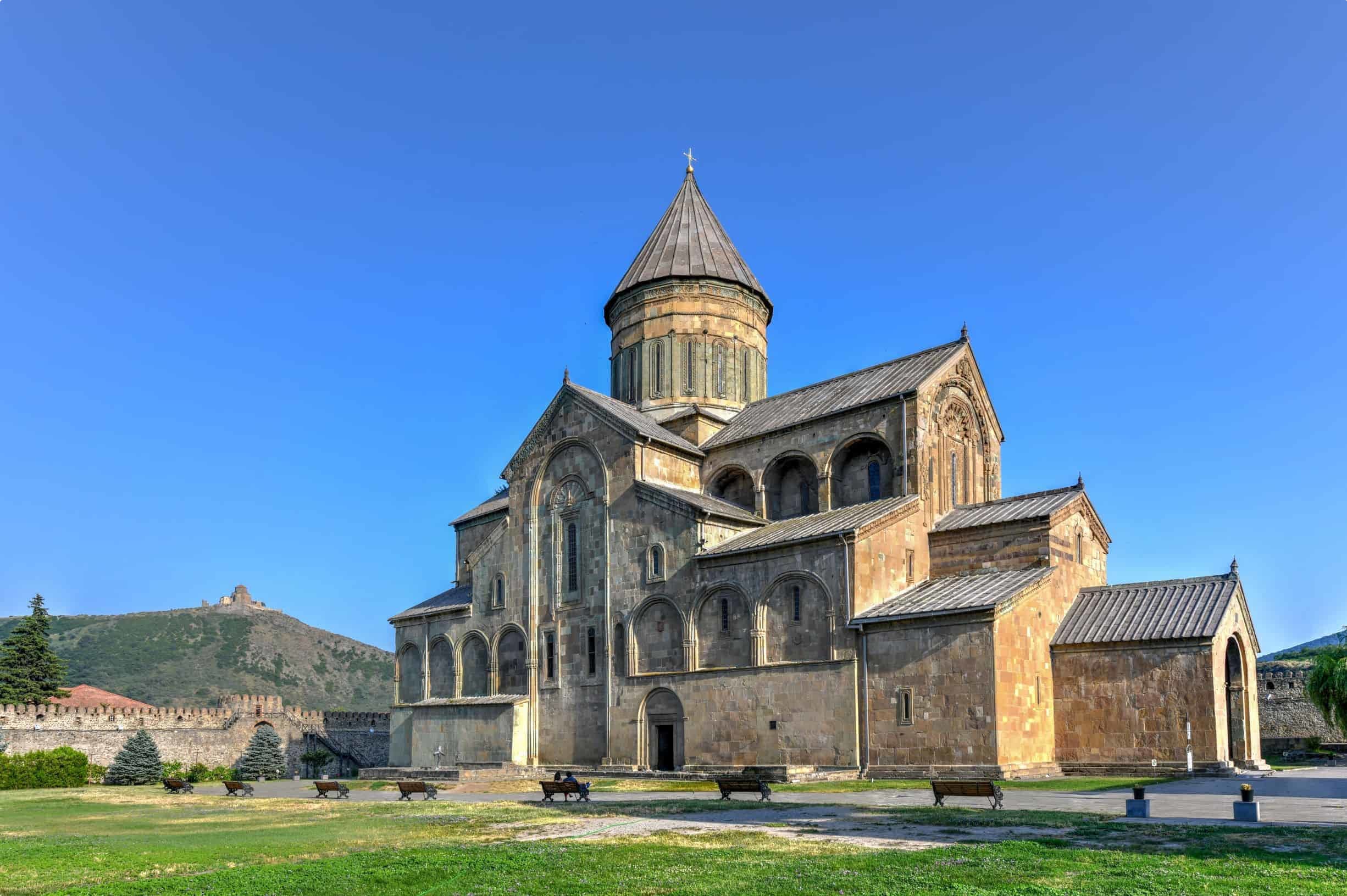
The 11th-century Sveti-Tskhoveli Cathedral is also weighted with historical and spiritual importance. According to tradition, Jesus’s crucifixion robe – which Nino came to Georgia in pursuit of – is buried in this cathedral. The name, translated as ‘Cathedral of the Life-Giving Pillar’, evokes even more ancient pagan traditions. Sveti-Tskhoveli is also home to the tombs of the Bagrat family of Georgian kings, buried in slabs of stone under the floor.
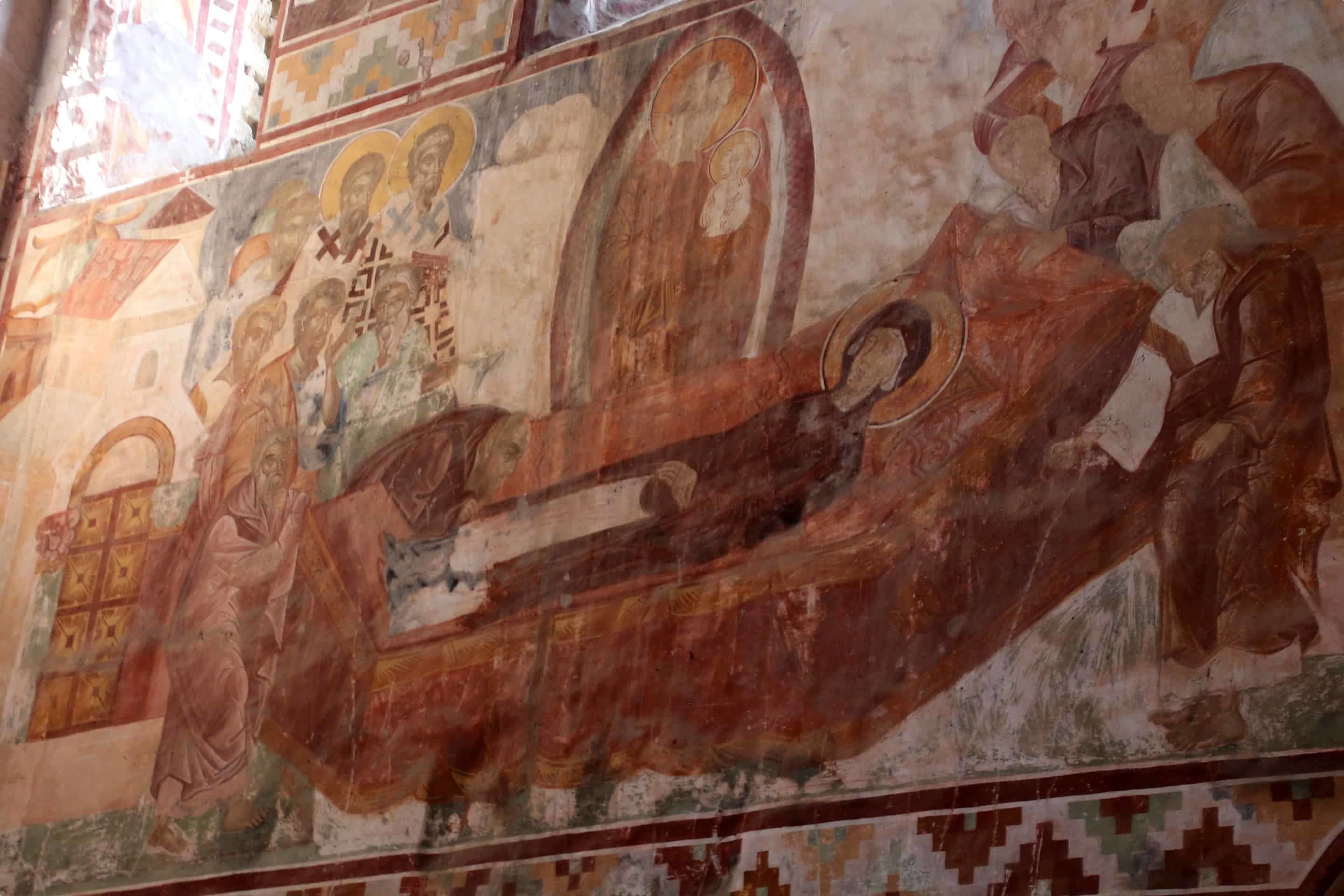
Gori
If ancient legend and ancient history entwine at Mtskehta, the town of Gori is notable for a much more modern (and rather more disturbing) form of historical mythmaking. A sleepy industrial town of around 60, 000, Gori has one claim to fame – it was the birthplace and childhood home of Joseph Stalin.
In contrast to the rest of the Soviet world, which has tried to wipe Stalin’s personality cult from existence, many residents of Gori remain steadfastly committed to their most famous resident. This shouldn’t be too surprising: after all, 70% of Russians still have a favourable view of Stalin, who – in the wake of decades of destablisation – is regarded as a strong leader who led the country through World War II.
Most of the affection for Stalin in Gori is in the ‘local boy made good’ mode rather than an expression of support for his specific politics or ideology. A somewhat surreal story from Georgia’s independence movement underlines this. In May 1989, when people from around Georgia demonstrated against Soviet rule, the Gori delegation arrived with posters bearing Stalin’s face – to be used as a symbol of Georgian independence. The delegation seemingly did not recognise the irony of this, and it took a lot of persuasion from the other protesters to keep the posters out of the march (Nasmyth, Georgia: In The Mountains of History, 111).

Even in today’s independent Georgia, Gori’s Stalin Museum remains a masterclass in Soviet propaganda. Stalin’s birthplace and childhood home – a modest two-roomed shack – is surrounded by a Doric-columned temple. Behind it, in a building resembling a Renaissance palace, is the Stalin Museum. Here, you can learn about Stalin’s childhood, his turn to communism, his bravery in fighting the Nazis in World War II. The museum is also home to one of Stalin’s twelve death masks.
Disturbingly, the museum covers up the truth about Stalin’s many atrocities. Don’t expect to learn about the brutal assassinations of his rivals, mass deportations to the gulag, or the disastrous side effects of the enforced collectivisation of farms.
The Stalin Museum remains a political flashpoint. In 2012, it was reported that the museum was now home to a banner, claiming that: ‘This museum is a typical example of Soviet propaganda and falsification of history’. The Georgian government vows to convert the museum into a ‘Museum of Stalinism’, which will tell the whole story ‘thoroughly and impartially’. How Gori’s still-devoted residents will feel about that remains to be seen.
Vardzia
The cave monastery of Vardzia is at the heart of Georgian history. Set among arid, rocky cliffsides interspersing fertile green valleys, Vardzia was built in the late 12th centuries on the orders of Queen Tamar, who is regarded as one of Georgia’s greatest rulers. When completed, the monastery extended over 19 levels, containing over 6000 apartments, a throne room, and large church with external bell tower. The monastery was covered with fertile terraces, for which an intricate system of irrigation was designed.

While the sanctuary escaped the Mongol onslaught, a devastating earthquake in 1283 destroyed two thirds of the city. Nonetheless, the surviving parts of the monastery remain a labyrinth of open-mouthed caves, secret ladders, secret passages and irrigation channels. Rooms still contain the everyday furniture of the 12th century; stone shelves, benches, and cupboards built into the walls of the cave.
The central church of the cave complex, the Church of the Assumption, is another site of great spiritual and historic importance to Georgians. The walls are covered in intricate frescoes from the 12th century. In pride of place is Queen Tamar, depicted in a black choker decorated with gems and a jeweled crown on her head. She holds a model of a church, signifying that she is its creator.
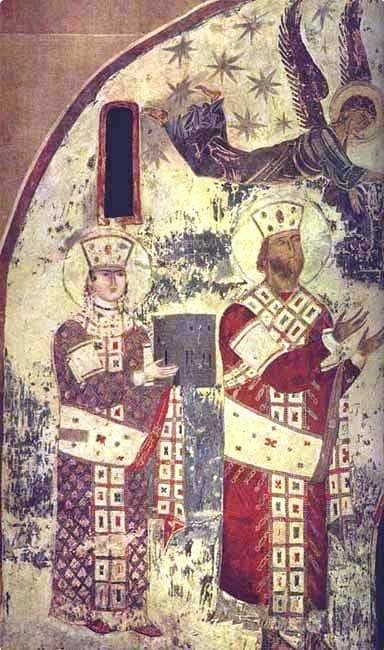
Deep in the hillside is a small, simple pool collected underneath a dripping ceiling, ‘utterly clear and colourless like a sheet of rippled glass’ (Nasmyth, Georgia: In The Mountains of History, 132). This water is known as Queen Tamar’s tears. Georgians come from around the country to touch the water, which for many has a significance as deep as that of holy water.
Kakheti
Georgian stereotypes hold that the residents of the Kakheti region are the happiest and most easygoing residents of Georgia. Unsurprisingly, Kakheti is Georgia’s wine country, a land of green valleys, fields stitched together with vines, and quaint villages.
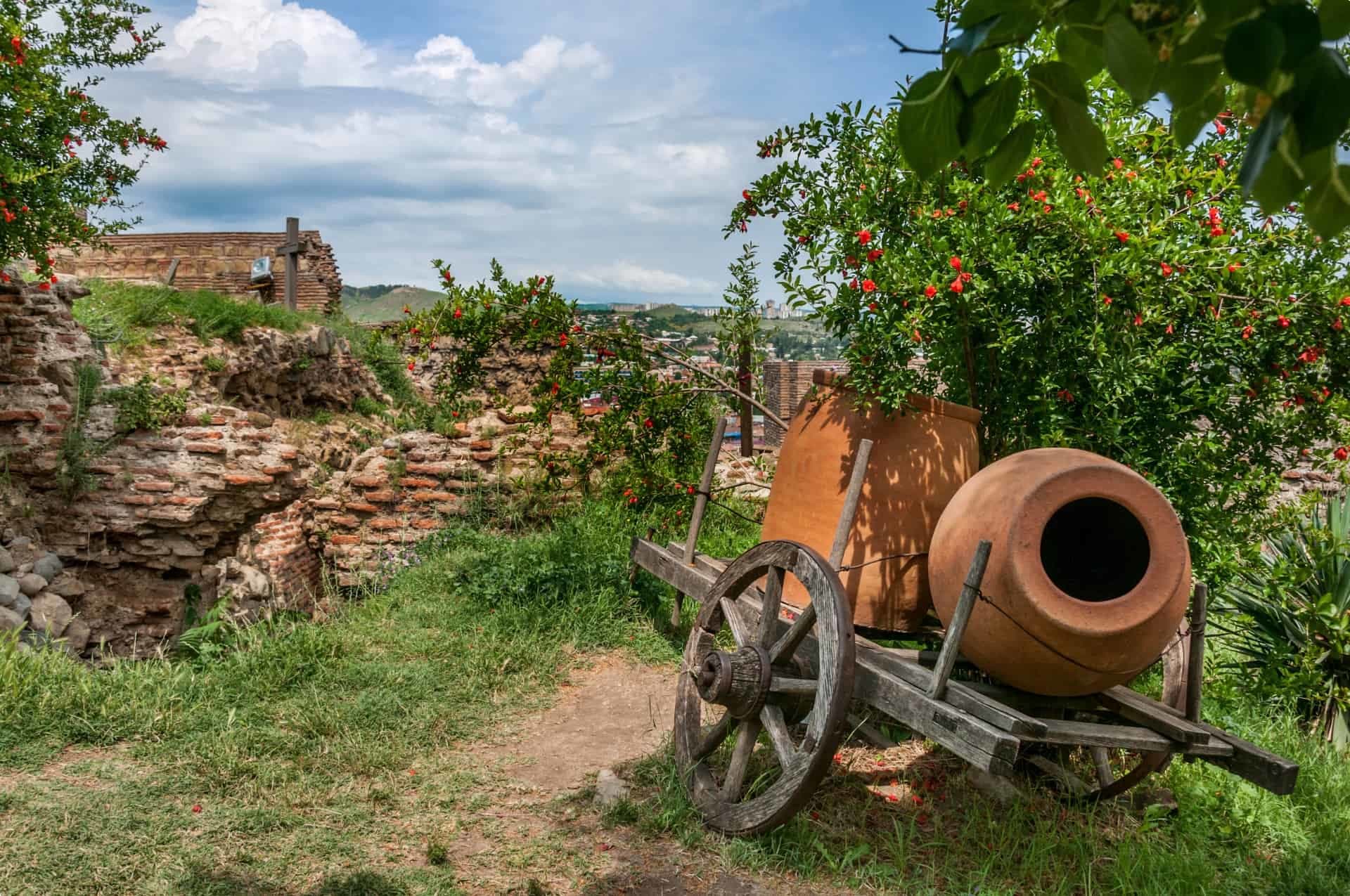
The beauty of the Kakheti region belies its turbulent history. Invading Persian armies marched through it many times from the south; while in the 19th century it was the site of a battle between the Caucasian rebel Imam Shamil and the Russian Army.
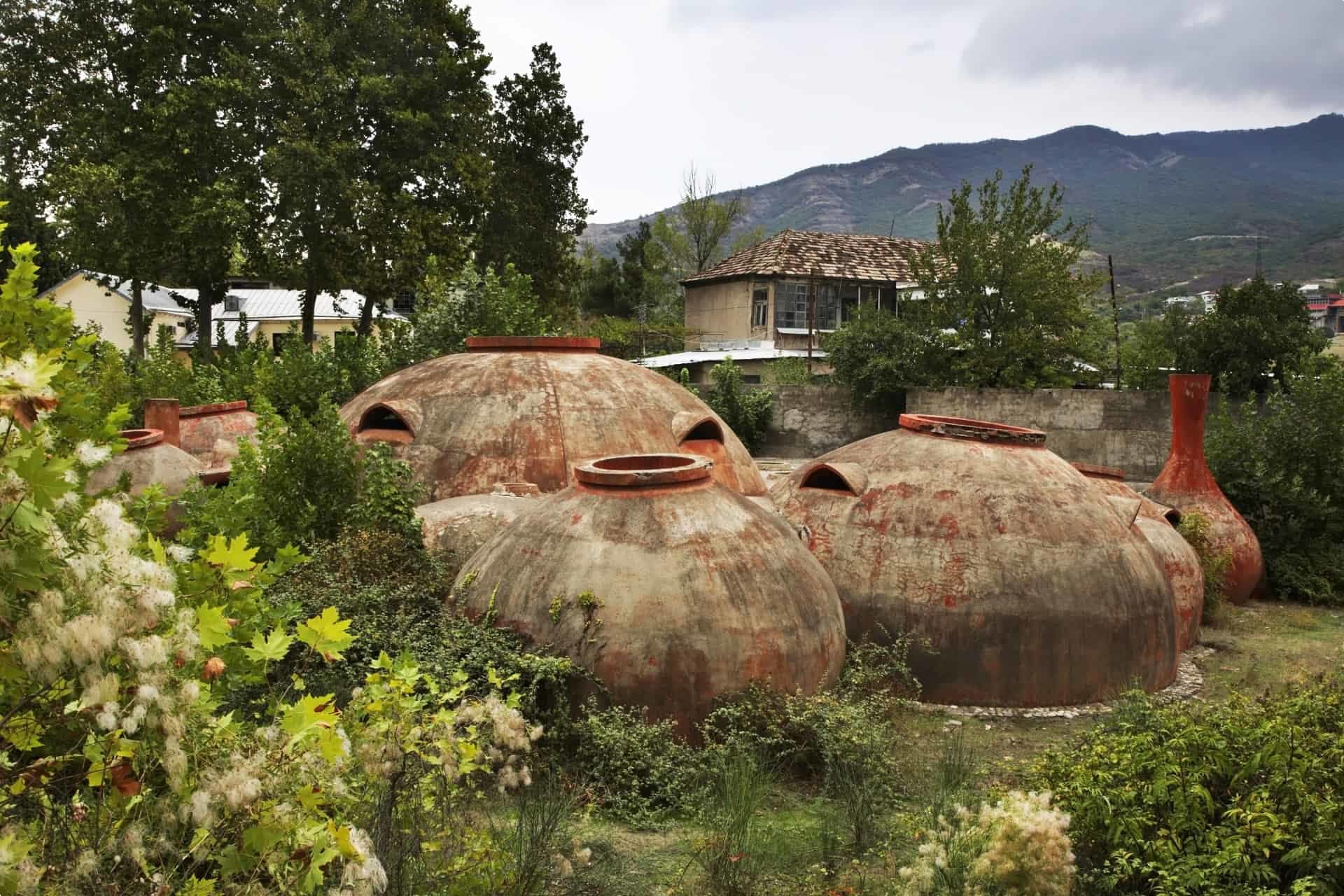
Georgia is receiving increased international attention for its wine culture. Georgians believe that their country was the first to create wine: the first grapes were planted here over 8000 years ago. Today, there are more than four hundred local varieties of wine in Georgia, many of them produced in Kakheti. Georgian wine is made using the distinctive qvevri method, in which grapes are pressed, transferred to large clay pots, which are then sealed to ferment underground for six months. Georgian wine is defined by increased skin contact, which results in a distinctive amber-coloured white, and a potent, complex flavour.

Kakheti also plays an important role in Georgia’s literary history. The Ikalto Monastery was a medieval centre of learning, where students learned geometry, philosophy, rhetoric and theology. Legend holds that Shota Rustaveli, the author of Georgia’s national epic, The Knight in the Panther Skin, attended the academy in the 12th century.
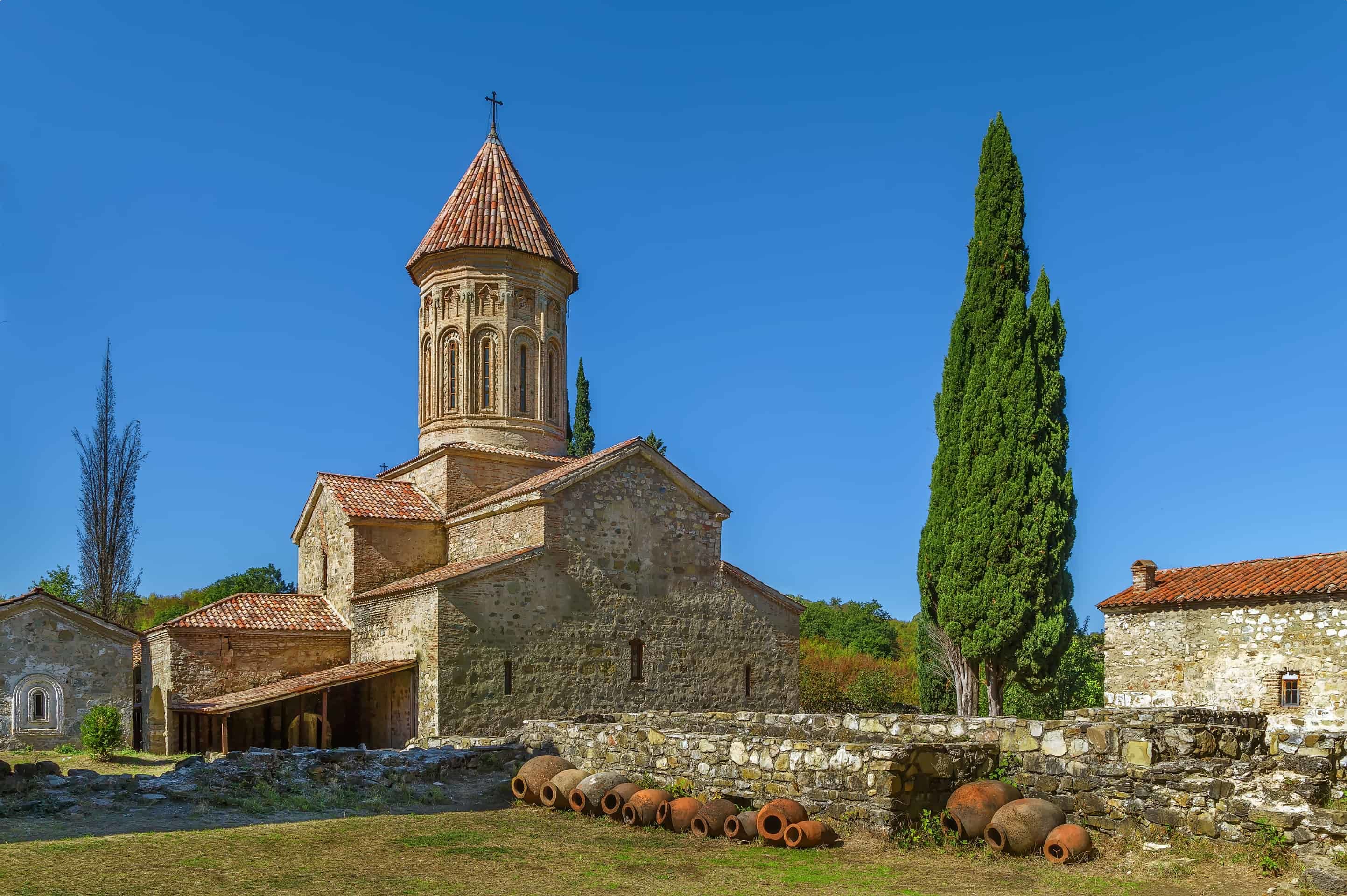
In more modern times, Kakheti was also home to the founder of Georgian romanticism, the poet Prince Alexander Chavchavadze. Chavchavadze’s lovely stately home, which played host to the Russian writers Lermontov and Griboyedov, is now open to the public as a museum.
Svaneti
If Georgia is often seen as the most Caucasian nation in the Caucasus, Svaneti is the most Georgian part of Georgia. Located high in the Upper Caucasus, Svaneti was so remote that it was never tamed by any of Georgia’s many outside rulers. It is a region of breathtaking alpine scenery, verdant valleys of alpine flowers overlooked by snowy mountains.

As the result of this isolation, Svaneti is the most traditional part of Georgia. The people here have a reputation for being courageous, fierce, and suspicious of foreigners, a reputation they’ve held since before the birth of Christ. For the Greek geographer Strabo the Svans were
‘foremost in courage and power … the whole of the people are a fighting force’ (Quoted Nasmyth, Georgia: In The Mountains of History, 143).
The unwritten dialect spoken in Svaneti is said to be similar to the Georgian language of the fourth century AD. Like all Georgians, the Svans are fiercely Christian. Ancient churches with vivid frescoes dot the mountainous landscape, while many churches are full of valuable icons that elsewhere would have gone to museums in Tbilisi.
At the same time, the churches here retain pagan features, speaking to an even more ancient history. Christian churches are adorned with rams’ horns, and several have pagan animals built into their walls. Two Svaneti villages are named after the Sumerian water god Lakhumu, while villagers today still sing songs beginning with the words ‘Oh Great White Sun!’, a reference to Enlil of the Sumerian sun cult. Such traditions link the Svans to their ancestors of over 5000 years ago.

The towns and villages of Upper Svaneti are defined by their tall stone towers, with heights of 20 to 25 metres. These towers, most of which date back to the 12th and 13th centuries, were used as defense against avalanches and enemies. They hold a top-floor family room equipped to last out a long siege or blizzard.
Though similar towers were used across medieval Europe, most were knocked down or left to decay. Among the fierce Svans, however, traditions of vendetta were retained until recently, meaning that the towers remained in use. Even today, though the towers are rarely used, modern houses are still built alongside these ancient keeps.
The most remote part of Svaneti are the villages of Ushguli, among the highest continously-inhabited regions in Europe – and a UNESCO World Heritage Site. Overlooked by Mount Shkhara, the third-highest mountain in Europe, the villages of Ushguli are not just the highest villages but among the oldest in Georgia. Archaeologists have dated the bases of Ushguli’s stone towers to the time of Christ. Though Mestia, the capital of Svaneti has been increasingly touched by tourism, Ushguli’s remoteness protects it – even today, the town has no hotels.
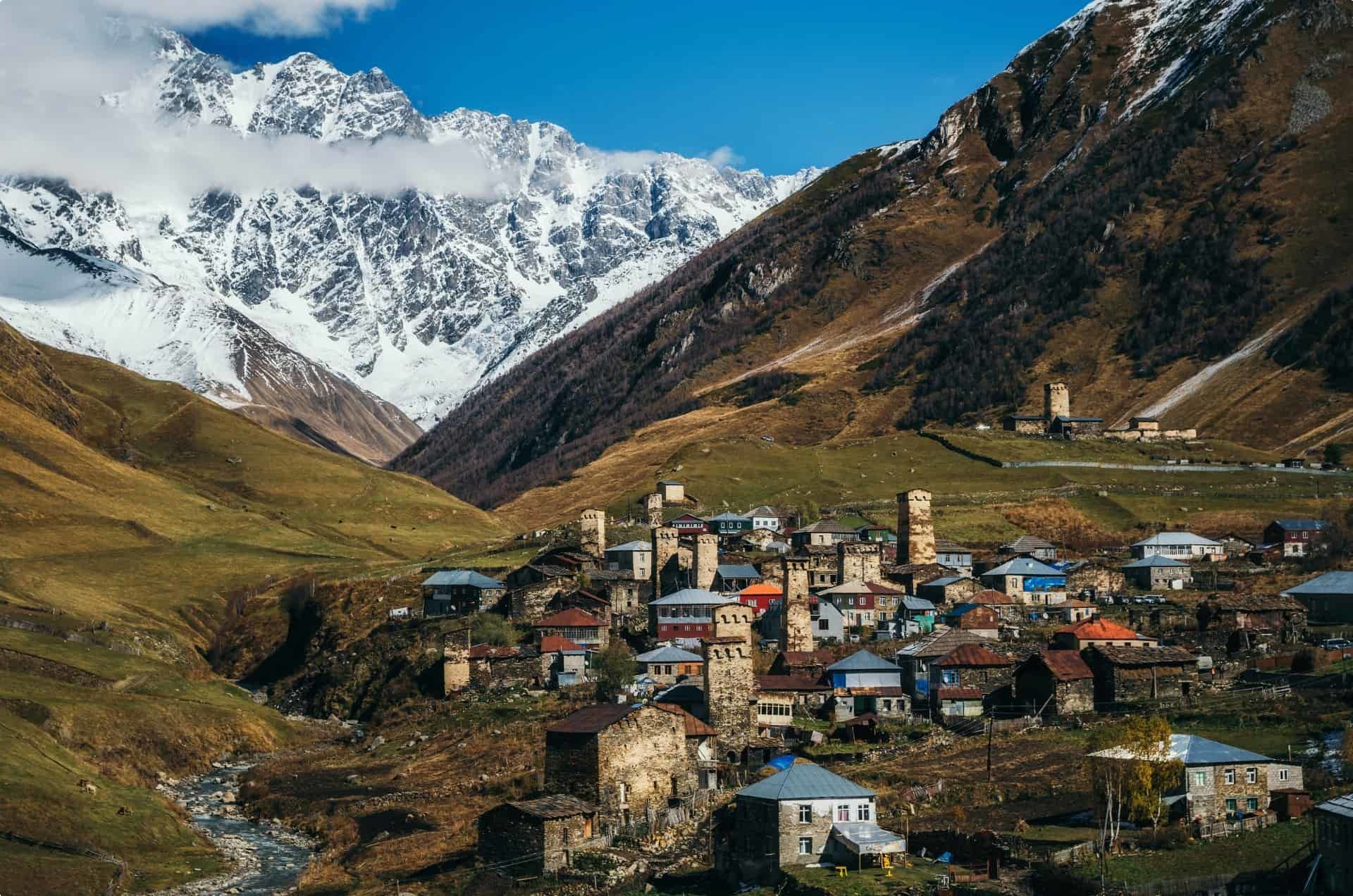
The greatest danger facing travellers to Svaneti is the hospitality of the locals. Like in other regions of Georgia, you may be invited to drink and eat at a supra, or feast. Don’t think that you can use the prospect of driving to turn down a shot of highly-alcoholic chacha – in Svaneti, drink-driving is not just acceptable, but actively encouraged. Travellers may have to face a difficult choice between not wanting to seem ungracious and protecting themselves when travelling down steep mountain passes.
Sukhumi
In ancient Greek mythology, the land around Sukhumi, on the Black Sea, was known as Colchis. For the Greeks, Colchis was a fabulously wealthy land on the periphery of the known world. According to legend, it was home to the Golden Fleece – a golden wooled, winged ram. Famously, the hero Jason assembled his crew (known as the Argonauts after their boat, the Argo) to claim the Golden Fleece.
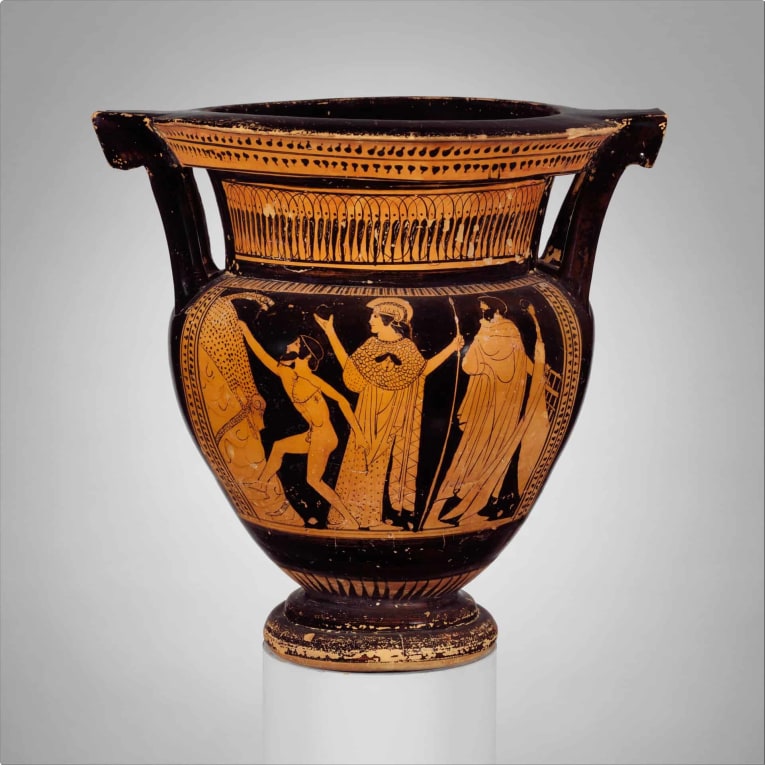
Though of course the story of Jason remains in the realm of myth, the Ancient Greeks did establish an important trading city, known as Dioscuria, at the site of today’s city of Sukhumi. The town was a thriving international port, which even minted its own coins. By the second century AD it became the Roman fortress town of Sebastopolis, which subsequently fell to the Byzantines and then the Turks. The ruins of Dioscuria have been underwater for 2,000 years and are sinking slowly, but visitors can see the remains of the Roman fort by the quayside.
The region around Sukhumi has been long known as Abkhazia, home to a distinctive nationality and language group, with closer ties to the peoples of the Northern Caucasus (in Russia) than to Georgia. In the Middle Ages, Abkhazia was an independent kingdom, but it merged with Georgia in order to repel the Turks.
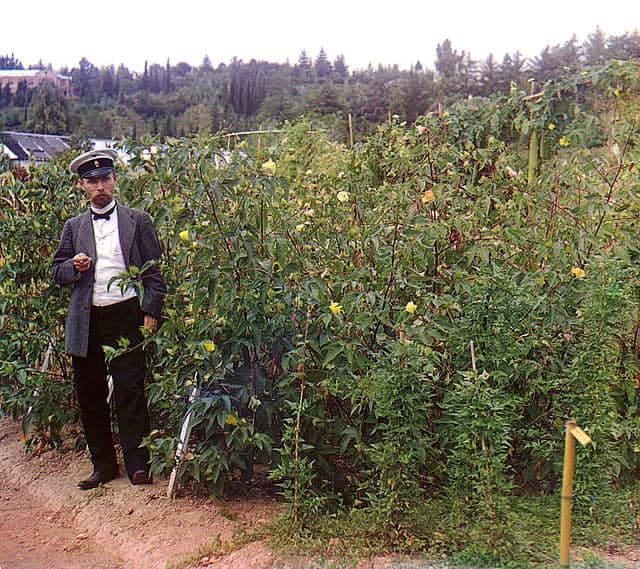
Blessed with sandy beaches and a sub-tropical climate, Abkhazia became the ‘Soviet riviera’, a beach playground for peoples from around the USSR. In the 1920s, in an attempt to make treatment facilities more accessible to ordinary people, the Soviet Union built sanatoriums and spas up and down the Black Sea coast. The region also was home to the dachas (holiday homes) of the Soviet elite, including Mikhail Gorbachev, who owned a home at Musera.
The Abkhaz people are also famous for their longevity. Sukhumi’s Centenarians’ Choir (Nartaa) claimed to have members up to 130 years in age. Scientists believe, however, that many older people in the region give a wrong date of birth, while many people – particularly once they reach the age of 80 – feel that they’ve earned the right to add on a few more years than they’re strictly entitled to.
The end of the Soviet Union would see tensions emerge between the Abkhaz minority and the Georgian majority. In a 1991 referendum, virtually the entire non-Georgian population of Abkhazia voted to remain in the Soviet Union, seeing this as less threatening than an independent Georgia. In 1992, following Georgian independence, an independent Republic of Abkhazia was declared. This would lead to a full-scale conflict between Georgia and Abkhazia (which had the support of Russia). Around 8,000 people died and between 200,000 and 350,000 were displaced.

Though a cease-fire was declared in October 1993, the area remains tense. Today, the Australian government’s smarttraveller.gov.au recommends that you do not travel to Abkhazia. However, the area is attracting increasing numbers of tourists, particularly Russians seeking out sand, sun, and sea. While Sukhumi saw significant damage in the conflict, the city is beginning to rebuild.
If this article has made you interested in visiting Georgia, think about joining our Tour of the Caucasus. Our small group tour visits the most important historical and cultural sights in Armenia, Azerbaijan and Georgia. To learn more, click here.


